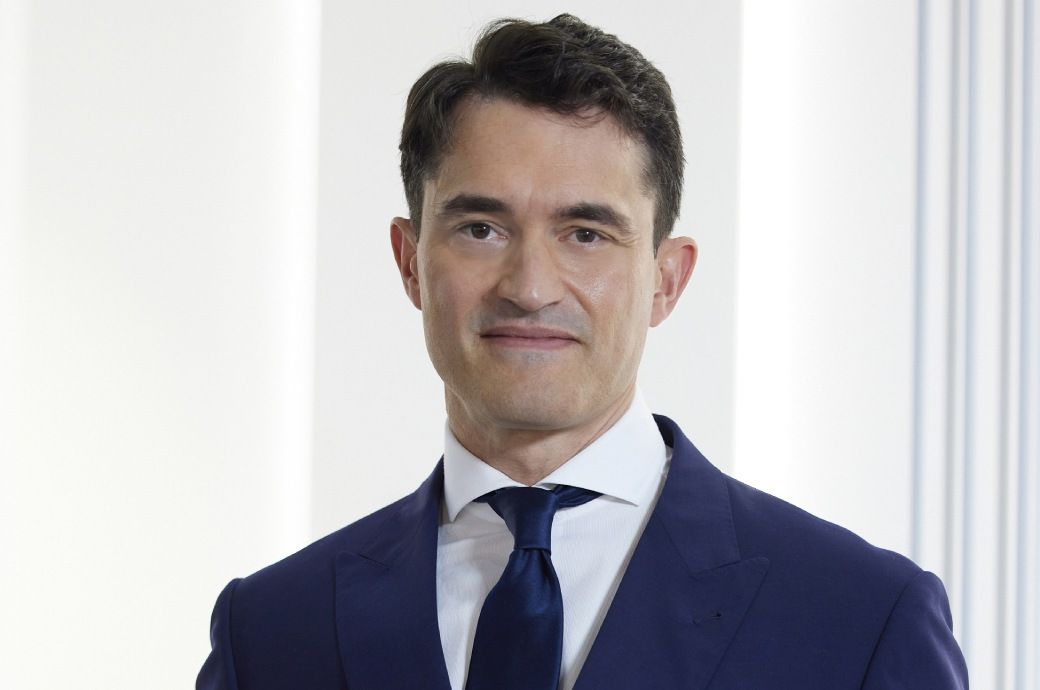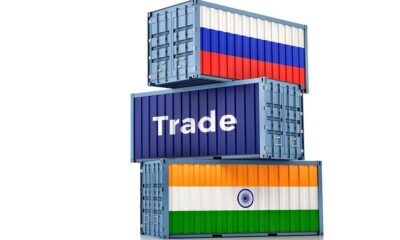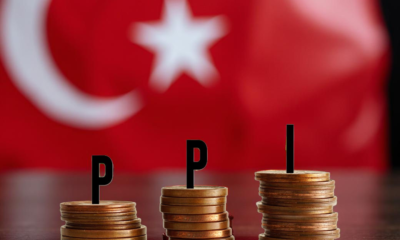Fashion
Sep 2025 US logistics manager index falls to lowest since Mar

The rate of expansion was more pronounced later in September, reading in at 60.5 during the second half of September – which was up significantly from the reading of 55.9 early in the month. The drop can be largely attributed to slowdowns in the expansion of supply chain costs.
The US logistics manager’s index (LMI) for September was 57.4, down by 1.9 points from August’s 59.3.
This is the lowest reading for the overall index since March this year.
The slowdown in logistics expansion is due to a declining rate of growth across the majority of the sub-metrics, with transportation utilisation down by 4.7 points to 50, which indicates no movement.
The LMI score is a combination of eight unique components that make up the logistics industry: inventory levels and costs, warehousing capacity, utilisation and prices, and transportation capacity, utilisation and prices.
Taken together, the three cost/price metrics were down 11.9 points in September, reading in at 195.66. This is the slowest rate of cost expansion since March and the second lowest in 2025.
The slowdown in logistics expansion is due to a declining rate of growth across the majority of the sub-metrics, with transportation utilisation down by 4.7 points to 50, which indicates no movement.
This is the first time a reading this low has been seen for transportation utilisation in September, which is generally a busy season in the freight market.
The slight negative freight inversion that began in August continued in September, with transportation prices dipping by 1.9 points to 54.2, which is just below 55.1 of transportation capacity (minus 2.2 points).
While transportation prices are still expanding, this is the lowest rate of growth tracked for this metric since April 2024, which was the last month of the most recent freight recession.
Inventory costs were high at 79.2.
Researchers at Arizona State University, Colorado State University, Florida Atlantic University, Rutgers University and the University of Nevada, Reno, and in conjunction with the Council of Supply Chain Management Professionals (CSCMP) issued the LMI report.
This slowdown is reflective of uncertainty in the overall economy, an official release said.
Fibre2Fashion News Desk (DS)
Fashion
Germany’s LuxExperience appoints Francis Belin as new CEO of Mytheresa

Francis Belin brings extensive and diverse luxury experience and proven leadership in driving international growth. He also brings a deep understanding of high net worth individuals worldwide. Most recently, as President Asia Pacific and overlooking global Luxury and Asian Art at Christie’s, Francis has achieved numerous milestones, cementing Christie’s position as the global market leader. He has played a key role in securing some of the most important collections and works of Art. Francis has been pivotal in several important strategic initiatives, including acquisitions such as Gooding & Company, a leading car auction house in California. Prior to that, he held various roles at Swarovski and Richemont, having started his career as a management consultant at McKinsey & Company.
Mytheresa parent LuxExperience has appointed Francis Belin as CEO effective January 01, 2026.
Belin, formerly president Asia Pacific at Christie’s, brings deep global luxury and HNWI experience.
He succeeds Michael Kliger, now LuxExperience Group CEO.
Belin will lead Mytheresa’s existing leadership team and drive the platform’s next phase of global expansion.
Francis Belin graduated from ESSEC in France and holds a diploma in International Management & Psychology from the University of Mannheim in Germany.
Following the tenure of Michael Kliger, who over the last 10 years successfully transformed Mytheresa into the leading luxury multi-brand digital platform, Francis Belin will succeed him as Mytheresa CEO and drive Mytheresa’s continued global expansion while delivering exceptional value for its customers and partners. Francis will report to Michael, who in his role as LuxExperience Group CEO, will continue to lead the overall strategy at Mytheresa, NET-A-PORTER, MR PORTER and YOOX. Francis will lead the current Mytheresa leadership team, including the Chief Commercial Officer, the Chief Growth & Site Management Officer, the Chief Marketing & Customer Officer, the Chief Buying & Group Fashion Ventures Officer and the Chief Creative Officer, who will all continue with their current responsibilities.
Michael Kliger, Chief Executive Officer of LuxExperience, said, “I am extremely delighted to appoint Francis Belin as the new Mytheresa CEO. With Francis we have found an exceptional leader, who is renowned for his customer-centric focus, global mindset, delivery of excellent results and collaborative leadership style. I am looking forward to supporting Francis as he leads the next exciting chapter for the Mytheresa business.”
Francis Belin adds, “I am truly honored to take on the lead of Mytheresa. I am deeply impressed by the robust business model and strong brand positioning that Mytheresa has established under Michael’s leadership. I look forward to working alongside the talented team to unlock Mytheresa’s next phase of global growth as an industry leader in the luxury market.”
Note: The headline, insights, and image of this press release may have been refined by the Fibre2Fashion staff; the rest of the content remains unchanged.
Fibre2Fashion News Desk (RM)
Fashion
EU names CPA as Bangladesh’s hub for Indo-Pacific maritime cooperation

The EU’s Critical Maritime Routes in the Indian Ocean (CRIMARIO) programme has been expanding the Indo-Pacific Regional Information Sharing (IORIS) platform into a central hub for secure operational coordination among maritime agencies.
It supports everything from incident reports and vessel tracking to geospatial analysis and joint responses to piracy, trafficking, fishing, marine pollution and search-and-rescue operations, a CPA press release said.
The EU has designated the Chattogram Port Authority (CPA) as Bangladesh’s focal point for its Indo-Pacific maritime information-sharing network.
The decision offers the country a larger role in a system used by over 150 organisations across 57 nations and may streamline how Bangladesh’s agencies use IORIS.
CPA officials attended the IORIS policy board’s third standing committee meeting last month.
The new EU decision offers the country a larger role in a system now used by more than 150 organisations across 57 nations, domestic media outlets reported.
It is also expected to streamline how Bangladesh’s agencies like the Navy, the Coast Guard, port authorities, customs, fisheries and emergency response units use IORIS.
CPA officials represented Bangladesh at the IORIS policy board’s third standing committee meeting in Manila last month.
Fibre2Fashion News Desk (DS)
Fashion
Birks sales surge on European acquisition, strong retail performance

Published
December 8, 2025
Birks announced on Friday a 16.2% uptick in half-year sales to $93.1 million, on the back of the Canadian jeweller’s acquisition of European Boutique, and a strong retail performance.
The Montreal-based company also logged an increase in third-party branded timepieces across multiple brands for the 26 weeks ending September 27, in addition to gains in sales of Birks branded jewelry and third-party branded jewelry.
Meanwhile, comparable store sales rose 6.3%, attributable to strong sales in all product categories, particularly in third-party branded timepieces, but also in Birks branded jewelry and third-party branded jewelry, the company added.
In light of the strong sales performance, Birks narrowed its earnings loss during the six months to an operating loss of $0.2 million, compared to a reported operating loss of $0.3 million in the prior-year period.
“Our net sales, gross profit and comparable store sales for the first half of Fiscal 2026 are higher than the corresponding period in Fiscal 2025 due in part to the acquisition of the European business but also due to our strong retail performance, which speaks to the strength of our product offerings, both in terms of our Birks branded products and our third-party branded watches and jewelry,” said Niccolò Rossi di Montelera, executive chairman of the board and interim CEO.
“I would like to thank our teams for their dedication and hard work. The growth achieved in the first half of Fiscal 2026 is a testament of our commitment to our customers and I am grateful for the unwavering efforts of all our employees which contributed to these results and the successful integration of the European stores.”
In July, Birks acquired the luxury watch and jewellery business of European Boutique from its founders, the Sutkiewicz family, for a purchase price of $9 million.
Copyright © 2025 FashionNetwork.com All rights reserved.
-

 Tech1 week ago
Tech1 week agoGet Your Steps In From Your Home Office With This Walking Pad—On Sale This Week
-

 Sports1 week ago
Sports1 week agoIndia Triumphs Over South Africa in First ODI Thanks to Kohli’s Heroics – SUCH TV
-

 Entertainment7 days ago
Entertainment7 days agoSadie Sink talks about the future of Max in ‘Stranger Things’
-

 Fashion7 days ago
Fashion7 days agoResults are in: US Black Friday store visits down, e-visits up, apparel shines
-

 Politics1 week ago
Politics1 week agoElon Musk reveals partner’s half-Indian roots, son’s middle name ‘Sekhar’
-

 Tech7 days ago
Tech7 days agoPrague’s City Center Sparkles, Buzzes, and Burns at the Signal Festival
-

 Sports1 week ago
Sports1 week agoBroncos secure thrilling OT victory over Commanders behind clutch performances
-

 Entertainment1 week ago
Entertainment1 week agoNatalia Dyer explains Nancy Wheeler’s key blunder in Stranger Things 5


















